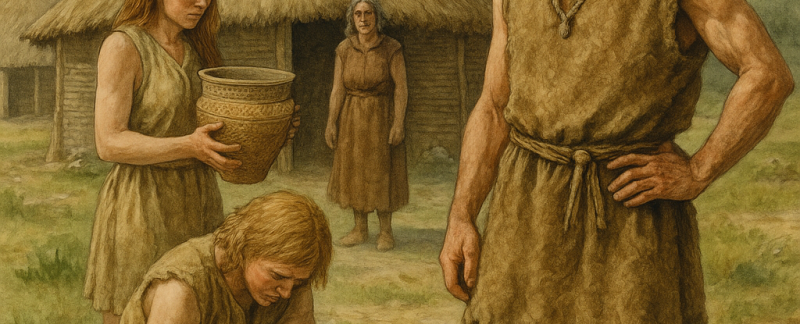Neolithic Ireland marked a transformative period in Irish history, spanning roughly from 4000 to 2500 BC. Consequently, during this time, communities shifted from hunter-gatherer lifestyles to settled farming. Moreover, the arrival of agriculture reshaped landscapes, creating organized fields, stone monuments, and permanent dwellings. As a result, innovations like polished stone tools, pottery, and megalithic tombs flourished, showcasing cultural and technological progress. Notably, these Neolithic communities built some of Europe’s most impressive ancient monuments, including passage tombs such as Newgrange, which still amaze modern visitors. Additionally, archaeological evidence reveals how they cultivated cereals, raised livestock, and established social structures. Therefore, the Neolithic period laid the foundations for future Irish society, embedding traditions of monument building, ritual, and communal life. Ultimately, exploring this era offers insights into the resilience and ingenuity of early Irish people, whose legacy still echoes across Ireland’s green landscapes.
Neolithic Ireland: Farming, Monuments, and Community Life
Neolithic Ireland marked a transformative era that reshaped Irish life. Around 4000 BC, farmers replaced wandering hunter-gatherers entirely. Consequently, this transition introduced agriculture, pottery, and permanent homes across Irish landscapes.
The Neolithic period endured until about 2500 BC, leaving impressive archaeological footprints. Communities farmed fields, raised animals, and built monumental tombs. Moreover, they formed complex social networks and cultural practices.
Their achievements laid foundations for later Irish cultural development. Therefore, understanding Neolithic Ireland remains crucial to studying ancient Irish history. Their legacy still influences traditions and beliefs today.
Neolithic Ireland and the Arrival of Farming
The introduction of farming was revolutionary for Neolithic Ireland. Consequently, people grew crops like barley and wheat while domesticating animals.
As a result, permanent settlements flourished, since families no longer needed to track wild game for survival. Early Neolithic farmers, therefore, cleared forests using polished stone axes and wooden ploughs.
Moreover, archaeological pollen studies show how farming expanded across Irish landscapes. Consequently, food surpluses supported larger communities and population growth. With stability, people now dedicated time to crafting, trading, and organizing society.
Neolithic Irish Tools and Pottery Advances
Neolithic Ireland’s tools and pottery represented significant technological advances. For example, polished stone axes improved construction efficiency and woodcutting abilities.
Therefore, tools were often traded across regions, showing the existence of long-distance exchange networks. Pottery, often decorated with geometric designs, served practical and ceremonial uses.
Additionally, ceramic vessels stored grain, prepared meals, and featured prominently in rituals. Consequently, pottery shards today provide insight into ancient diets, trade patterns, and artistic creativity.
Neolithic Ireland’s Monumental Tombs and Ritual Sites
Neolithic Ireland’s megalithic tombs are iconic. Consequently, across Ireland, farmers built massive stone burial and ceremonial structures. Four main tomb types emerged: court, portal, passage, and wedge tombs.
The passage tombs at Brú na Bóinne, such as Newgrange, Knowth, and Dowth, are especially famous. Notably, Newgrange predates Stonehenge and the Egyptian pyramids.
Importantly, Newgrange’s passage aligns perfectly with the winter solstice sunrise. Consequently, sunlight floods the tomb’s inner chamber, showcasing astronomical sophistication.
Neolithic Irish Daily Life and Community Activities
Daily life in Neolithic Ireland revolved around farming, crafting, and community cooperation. Typically, families lived in rectangular wattle-and-daub houses with thatched roofs.
Moreover, hearths provided warmth and cooking spaces. Archaeological evidence suggests people consumed cereals, dairy, meat, and gathered wild plants.
Consequently, grinding stones and pottery shards reveal how food was processed and stored. Children, therefore, likely assisted with farming and herding while learning from elders.
Social life included shared rituals, seasonal feasts, and perhaps regional trade events, strengthening community ties and traditions.
Neolithic Ireland’s Artistic Expression and Symbolism
Neolithic Ireland’s art reflected deep spirituality. For example, stone carvings, pottery patterns, and burial goods depicted cosmic and natural themes.
The iconic spirals and lozenges at Newgrange are among Europe’s finest Neolithic artworks. Consequently, they likely represented life cycles, rebirth, or the sun.
Additionally, polished stone jewelry, beads, and axes displayed remarkable craftsmanship. Some were deliberately buried in tombs or ritual hoards.
Neolithic Ireland and Environmental Transformation
Neolithic farmers dramatically transformed Irish landscapes. Consequently, they cleared forests, built fields, and introduced livestock, reshaping ecosystems permanently.
Archaeological pollen and soil studies show evolving land use over time. Initially small-scale, farming expanded and occasionally led to soil exhaustion.
Communities, therefore, adapted by rotating plots or relocating settlements. Consequently, they pioneered land management strategies shaping Irish agriculture for generations.
Neolithic Ireland’s Enduring Impact on Irish History
Neolithic Ireland offers captivating insight into a society balancing survival, ritual, and creativity. Consequently, its legacy still resonates today.
Visiting sites like Newgrange or walking rural Ireland connects modern visitors to these ancient ancestors. Their achievements continue inspiring wonder and curiosity.
By studying Neolithic Ireland, we honor humanity’s remarkable adaptability. Consequently, this chapter helped shape the Ireland we know today.

